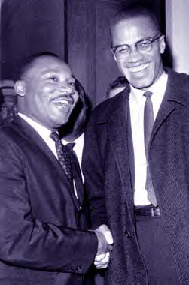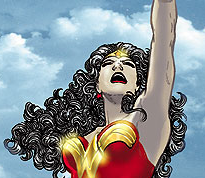[cross-posted at Liberty & Power]
On LRC today, Tom Woods points out that the Northern political establishment which now demonises the South and its historical heritage used to treat these with admiration and respect instead. Tom quotes, for example, Clyde Wilson’s observation: “I have seen a photograph of Franklin D. Roosevelt making a speech before a huge Confederate battle flag. Harry Truman picked the romantic equestrian painting of Lee and Jackson for the lobby of his Presidential Library. … Gone with the Wind, book and movie, was loved by audiences worldwide. If you look at the Hollywood movies and also the real pictures from World War II, you will see battle flags painted on U.S. fighter planes and flying over Marine tents in New Guinea.”
Tom’s right about that, of course; but I have to disagree with his interpretation. As Tom sees it, this is a sign that political culture has grown less enlightened and more politicised. But as I see it, the earlier romanticisation of the South and the later demonisation of the South have both served the establishment’s political agendas.
 Before (and indeed well into) the civil rights era, the Northern power elite tended to soft-pedal the South’s past legacy of slavery and ongoing practice of Jim Crow for the quite rational (instrumentally rational, that is) reason that the North was, after all, deeply implicated in white-supremacist practices itself, albeit to a lesser degree, and had little interest in raising agitation about the treatment of blacks. Moreover, the mythos of North-South reconciliation, mutual admiration, and “healing the wounds” was crucial to securing the attachment of white Southerners to the Union and its military adventures. (And it worked: those most likely to be sporting a Confederate flag have traditionally been those most willing to fight and die for the American flag – very strange, since these were the flags of opposite sides. Of course neither the imperialist Union nor the slaveocratic Confederacy was worth dying for – but what a coup to con the same poor suckers into dying for both!) Thus did the Northern power elite co-opt the Southern power elite, while blacks and non-elite whites got the shaft (albeit not equally, of course).
Before (and indeed well into) the civil rights era, the Northern power elite tended to soft-pedal the South’s past legacy of slavery and ongoing practice of Jim Crow for the quite rational (instrumentally rational, that is) reason that the North was, after all, deeply implicated in white-supremacist practices itself, albeit to a lesser degree, and had little interest in raising agitation about the treatment of blacks. Moreover, the mythos of North-South reconciliation, mutual admiration, and “healing the wounds” was crucial to securing the attachment of white Southerners to the Union and its military adventures. (And it worked: those most likely to be sporting a Confederate flag have traditionally been those most willing to fight and die for the American flag – very strange, since these were the flags of opposite sides. Of course neither the imperialist Union nor the slaveocratic Confederacy was worth dying for – but what a coup to con the same poor suckers into dying for both!) Thus did the Northern power elite co-opt the Southern power elite, while blacks and non-elite whites got the shaft (albeit not equally, of course).
But as the civil rights movement raised the national consciousness over the ongoing oppression of blacks in the South, highlighting the continuity between slavery and the century of Jim Crow that succeeded it, the romanticisation of Dixie ceased to be a viable strategy for the establishment. So the establishment switched strategies; instead of turning a blind eye to Southern racism, they would instead begin to use it as a cause célèbre, employing blacks as pawns in their power game. The (genuine and pressing) need to suppress Jim Crow laws became an opportunity for the federal government to justify massive increases in power vis-à-vis the states; it was time to pull out the Civil War tropes and once again portray a heroic federal intervention on behalf of “brothers in bondage.” And so the (cynically strategic) romanticisation of the South gave way to a (likewise cynically strategic) demonisation of the South.
 No genuine concern for authentic black liberation motivated the ruling class; Martin Luther King didn’t become their hero until he was safely dead (when his nonviolence could be sanctified and his anti-imperialism memory-holed), and Malcolm X and the Panthers horrified them. Nor did our white rulers feel much empathy with the white Northern organisers who put their bodies on the line in antiracism struggles. Embracing the cause of civil rights was simply a power play, and the South was conveniently transformed from hero to bogey, just as Eastasia went from ally to enemy in Orwell’s 1984.
No genuine concern for authentic black liberation motivated the ruling class; Martin Luther King didn’t become their hero until he was safely dead (when his nonviolence could be sanctified and his anti-imperialism memory-holed), and Malcolm X and the Panthers horrified them. Nor did our white rulers feel much empathy with the white Northern organisers who put their bodies on the line in antiracism struggles. Embracing the cause of civil rights was simply a power play, and the South was conveniently transformed from hero to bogey, just as Eastasia went from ally to enemy in Orwell’s 1984.
Today, in the post-Jim-Crow era, the myth of racism as a uniquely Southern phenomenon serves to distract attention from the ongoing white supremacy that prevails throughout the country – and also serves to perpetuate the kindly-white-massa-in-Washington, liberation-from-above paradigm of antiracist activism, as opposed to the prospect (heaven forfend!) of blacks securing their own liberation on their own terms. And the modern Northern fantasy that the Civil War was solely about slavery (as much a myth as the Southern – and pre-1960s Northern – fantasy that the Civil War was hardly about slavery at all) helps to associate slavery and secession in the popular mind, thus tarnishing by association any attempt at the latter. The demonisation of the South is thus a stratagem of the powerful, and not something that libertarians should embrace.
But the romanticisation of the South and its heritage is, to put it mildly, no improvement; and the era in which such romanticisation prevailed was not a more enlightened time, but rather a time when a relative absence of enlightenment about racism made the romanticisation strategy politically feasible. When that condition changed, the power structure adapted.
Yes, of course the Confederate flag stands (inter alia) for slavery, just as the American flag stands (inter alia) for imperialism. Libertarians should have no truck with either.
In the wake of the recent shadow falling upon MLL, which has affected not only the listserv but the very term “Movement of the Libertarian Left” – now claimed by the list moderator as his legal “property”! – several new institutions have formed to carry on the authentic MLL legacy. I’ve blogged previously about the LeftLibertarian2 listserv and the Left-Libertarian blog aggregator (started up by Kevin Carson and Jeremy Weiland respectively).
The two latest entries are the Agorist Action Alliance or A3 (webpage launched by Brad Spangler) and the Alliance of the Libertarian Left or ALL (webpage launched by your humble correspondent). These both may be regarded as continuations of the original spirit of the MLL, but with the A3 emphasising the MLL’s specifically agorist focus, while ALL emphasises the MLL’s broader ecumenical tradition. Simultaneous membership in A3 and ALL is both possible and encouraged!
 While I don’t always agree with all the details of Carson’s updated version of Tuckerite anarchism (the two main points of contention are the labour theory of value and the opposition to absentee land ownership – though given Tucker’s subjectivised spin on the labour theory and his acceptance of competing property regimes under anarchy, these differences are less sharp than they might seem), his book is an absolutely essential text for the cause of left/libertarian reunification, and I’m delighted to see it in a position to reach a wider audience. For more on Carson, see
While I don’t always agree with all the details of Carson’s updated version of Tuckerite anarchism (the two main points of contention are the labour theory of value and the opposition to absentee land ownership – though given Tucker’s subjectivised spin on the labour theory and his acceptance of competing property regimes under anarchy, these differences are less sharp than they might seem), his book is an absolutely essential text for the cause of left/libertarian reunification, and I’m delighted to see it in a position to reach a wider audience. For more on Carson, see